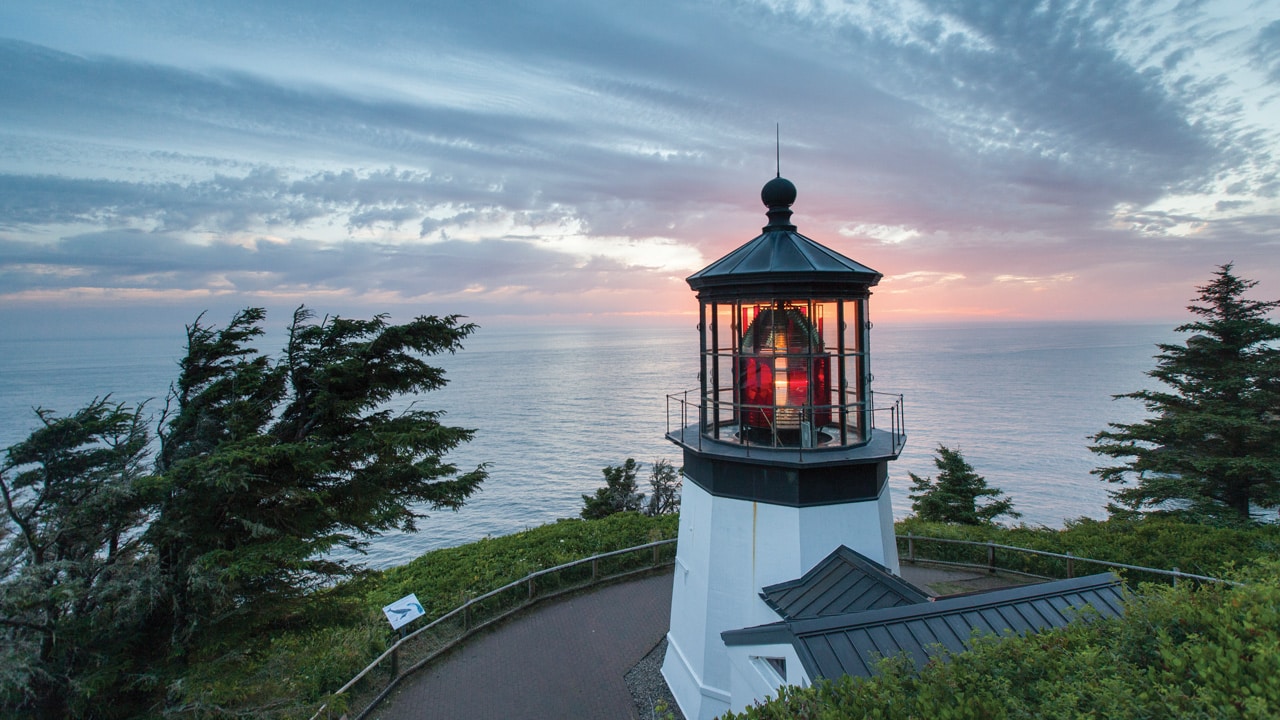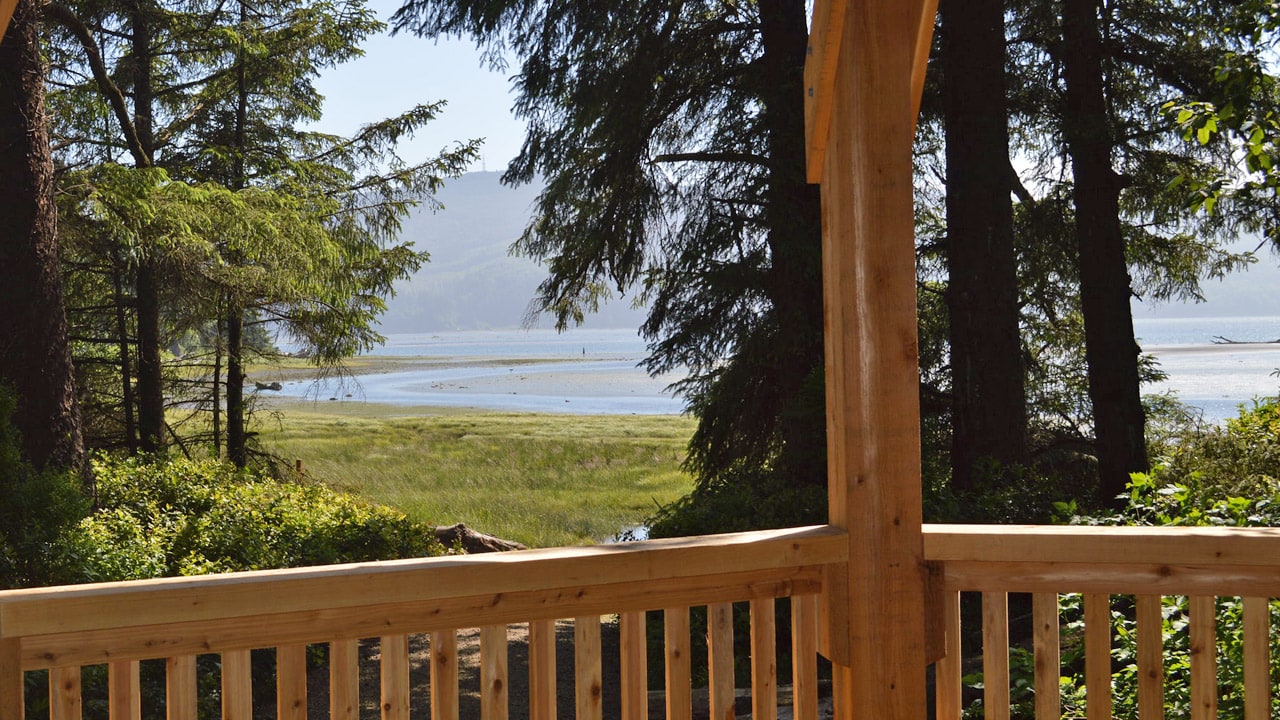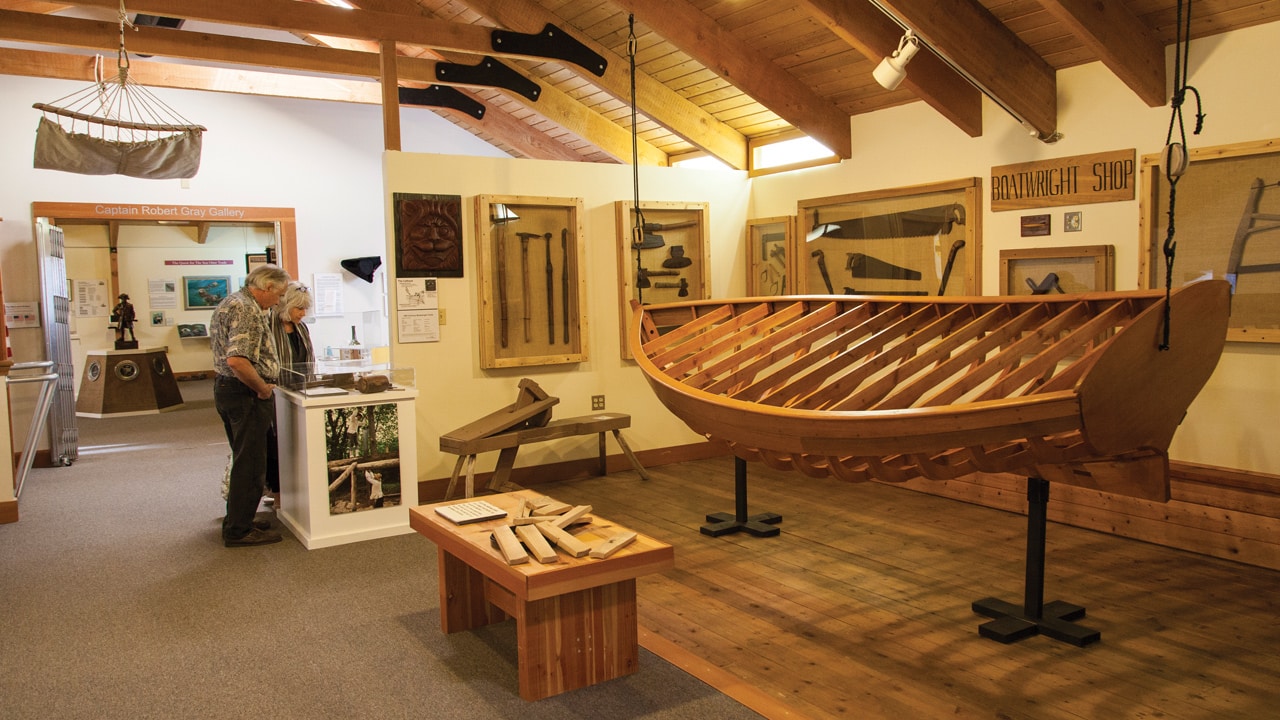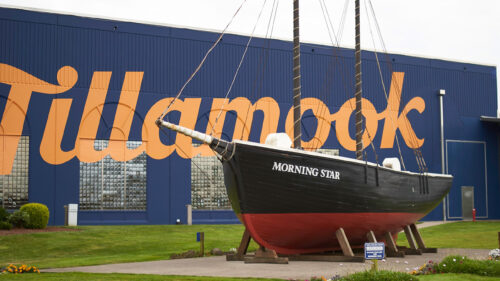Here in one of the greenest and rainiest spots in Oregon, visitors flock to Tillamook Creamery to sample the famous cheese and ice cream. Tillamook is often a stopping point on the way to Oregon’s coastal beaches. But did you know that Tillamook Bay is Oregon’s second largest and most accessible bay, encompassing nearly 600 miles of watershed?
You can take a hike, visit the location of an old ghost town, play around in clam flats and revel in quiet, lesser-known historic landmarks in and around the communities surrounding Tillamook Bay. Here are a few wonderfully scenic sites on the route to enjoy all year round.

Bay City
As the former site of one of the largest permanent Native American villages on Oregon’s North Coast,
Kilchis Point Reserve has a rich history. Tillamook County’s first pioneer settler, Joe Champion, arrived here in 1851 and was invited by Chief Kilchis to live in a spruce stump next to the village while he built a cabin. The first ship registered in the Oregon Territory, the Morning Star (a replica of which is now in front of Tillamook Creamery) was built at Kilchis Point, which was also the headquarters of the Whitney Lumber Company from 1919 to 1927. Visitors can explore the 2 miles of forested trails leading to these points of interest with unique gardens, a bird-watching station and wildlife all around. The site welcomes visitors of all abilities with a modified golf cart available by request. (Call the Pioneer Museum to schedule).

Garibaldi
In addition to being a hub for commercial fishing, Garibaldi is an oasis for history-seeking visitors. Garibaldi Maritime Museum (open year-round; Dec., Jan., Feb. by appointment only) tells the story of Captain Robert Gray and his ship Lady Washington, which came ashore for supplies in Tillamook Bay in 1788. Crane your neck to see the tall smokestack, one of the largest manmade structures on the Oregon Coast. Built in 1927, it’s the last remaining evidence of the Whitney Lumber mill. Not far away, an elegant, historic, Colonial Revival-style building houses the Tillamook Coast Guard Station, which averages more than 250 search-and-rescue missions every year between Tillamook Head and Cape Kiwanda. While you’re in Garibaldi, take a walk along the paved Harborview Trail, a walking path that hugs the shoreline north of the Garibaldi harbor.

Tillamook
Steep yourself in the rural heritage and dairy-farming history of the region at the Tillamook County Pioneer Museum, which includes a research library (by appointment) filled with the fascinating history of the region amidst newspapers, oral histories, high school yearbooks and more. From the museum, take a self-guided walking tour of historic downtown Tillamook, stopping at landmarks like Thayer Bank, constructed in 1894 from local sandstone; the 1940 post office; and the Tillamook Hotel, built in three stages from 1900 to the 1940s. Also pick up a map of the self-guided Tillamook County Quilt Trail, the first of its kind on the West Coast, spotlighting a number of structures throughout the town with a large painted wooden quilt block.

If You Go:
Check out other fascinating stops on the route, including the Cape Meares Lighthouse, Barview Jetty — built by hand in 1917 — and the lost city of Bayocean, named for the resort community that disappeared between 1907 and the 1950s due to erosion. Everything in the town — including paved streets, a private railroad, a general store, a post office, a public school, a bakery, a bowling alley, a tennis court, golf links, a church, a park, a luxury hotel and a movie theater — vanished, and the town’s 600 residents were displaced. Today visitors can stroll the 7.6-mile Bayocean Spit Loop Hike and relive a bit of history.
A bit further north of Tillamook Bay in Rockaway Beach, the Old Growth Cedar Trail is a nature preserve with a wheelchair-friendly boardwalk (less than a mile) that leads to one of Oregon’s largest trees, at 49 feet across. The Western red cedar lives in the heart of the 45-acre old-growth forest, an awe-inspiring sight to see.



